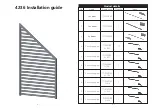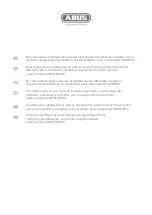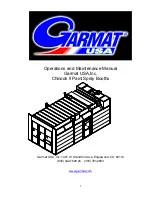
Overview
2
XP2i Programming Instruction Manual
—
communIcatIon Format
Input is case-sensitive; all instructions should be sent in UPPERCASE. Instructions must be terminated with a single carriage return (CR) character followed by
an optional linefeed (LF) character. Note that while the XP2i expects either CR or CR/LF as command termination on its input, it always appends a CR/LF pair to
its output. For reference, CR is ASCII value 13 decimal, while LF is ASCII character 10 decimal.
You have 30 seconds to complete an instruction. After 30 seconds, the XP2i will evaluate whatever it has received and try to match it to its table of commands.
If the command is incomplete, it will fail to match and the XP2i will return: N,Ø. (Negative acknowledgment with no reception errors, so syntax is wrong.)
—
Query InStructIonS
All queries start with a question mark (?). Any pressure values returned are split across two lines; the first contains a floating-point value, and the second
contains the name of the measurement unit. Each line is right-justified in a fixed width 10 character field. (Since each line is terminated with a CR-LF pair, this
means the total length of the response to a measurement query is 24 bytes.) A decimal point will always be included with the pressure value (for clarity) even
if it is not displayed on the XP2i. For example, a pressure query of a 300 PSI XP2i on the mbar scale could return a reading like this:
2478.
mbar
If low batteries cause the low battery message to be displayed, then any pressure query will replace the pressure value with the letters “BATT”.
message Store
?MSG
. . . . . . . .Retrieve the data (usually tag# or ID) from the message store.
model
?MOD
. . . . . . . .Return the model name, up to 20 characters long. For example, a 100 PSI XP2
i
would return the following:
100PSIXP2I
Pressure
?P,U
. . . . . . . .Pressure returns the pressure value, followed by the pressure unit on the second line.
Example:
-7.89
mmH2O































